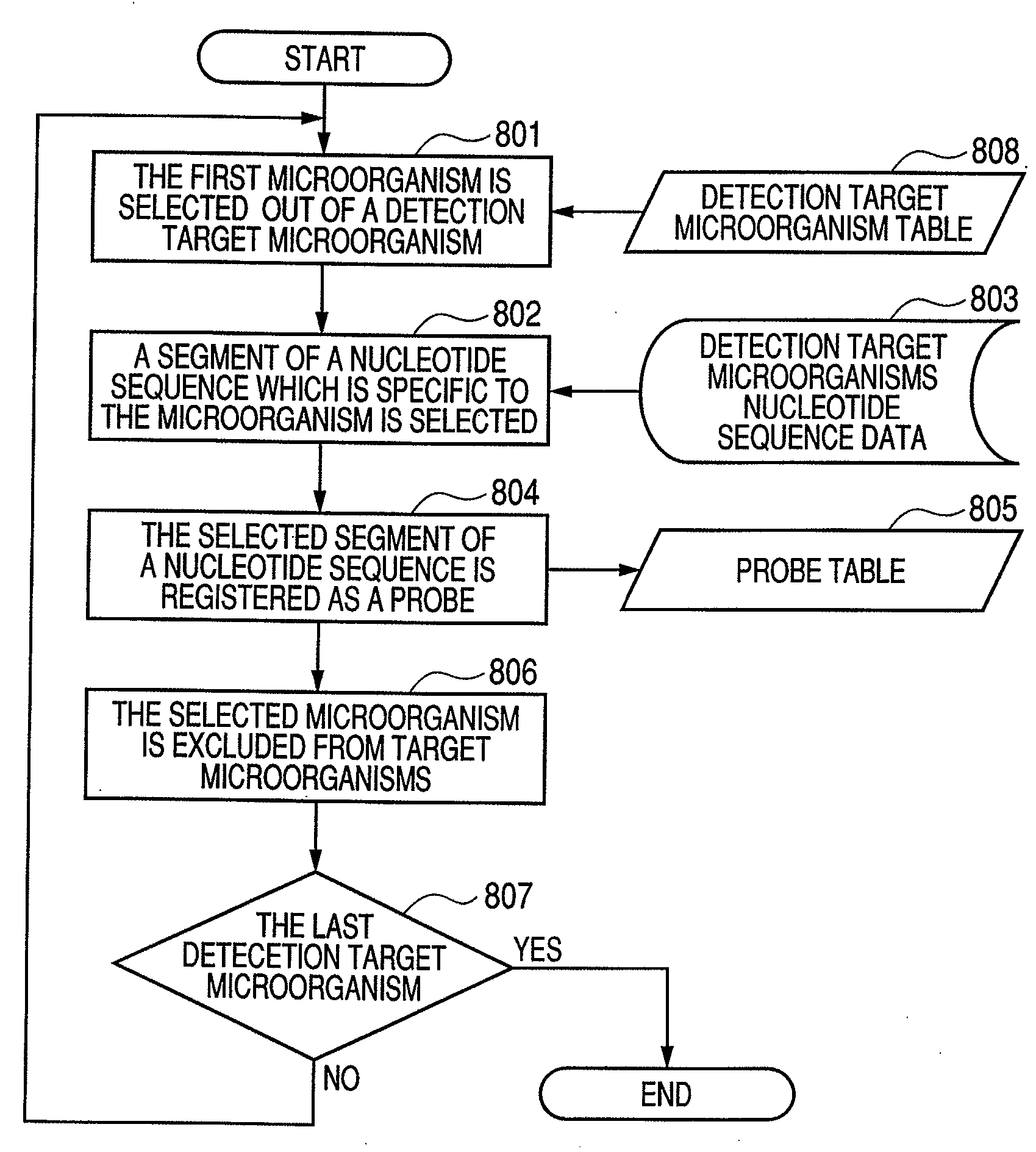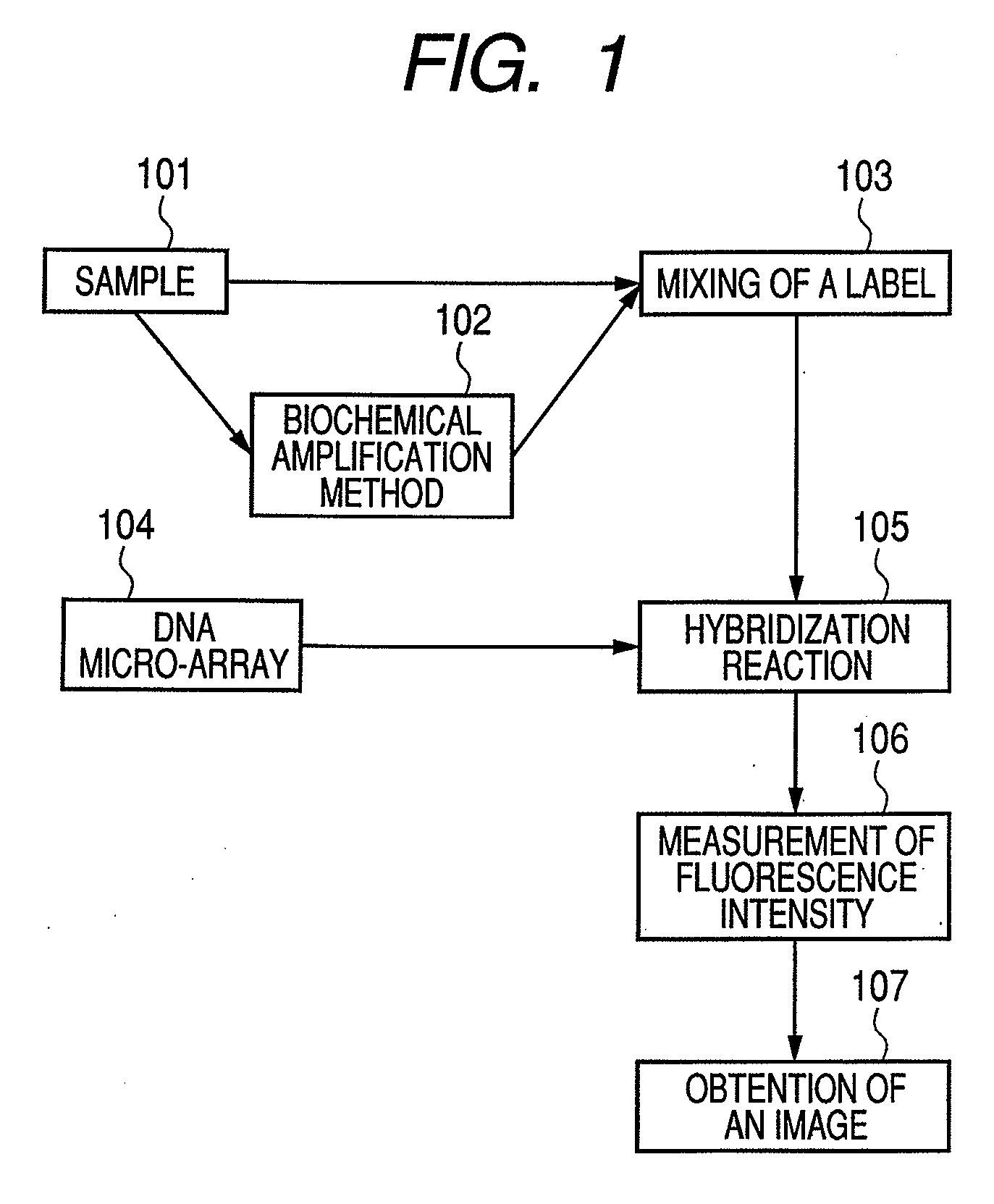Method for detecting nucleic acid in sample, method for designing probes, system for designing probes therefor
a nucleic acid and sample technology, applied in the field of methods for detecting nucleic acid in sample, methods for designing probes, systems for designing probes therefor, can solve the problems of increasing the number of calculations and a long time for designing probes, and the inability to identify accurately microorganisms
- Summary
- Abstract
- Description
- Claims
- Application Information
AI Technical Summary
Benefits of technology
Problems solved by technology
Method used
Image
Examples
embodiment 1
[0093]A designing method for designing suitable probes for the above described detection method will be described in detail. Hereinbelow, a target nucleic acid sequence is expressed as a microorganism, which may exist in a sample.
[0094]FIG. 7 is a block diagram illustrating a constitution of a data processing apparatus capable of applying the probe design method according to Embodiment 1. The designing method for probes according to the present embodiment is implemented in an apparatus constituted of an external memory device 701, CPU 702, a memory 703 and an input / output device 704. Namely, it can be implemented in a conventional personal computer, a work station, etc.
[0095]In FIG. 7 the external memory device 701 stores a program to carry out the designing method according to the present embodiment, data on various nucleotide sequences and parameters (length of DNA (oligonucleotide) probes, melting points, etc.). Further it has a function to store the probe sequences themselves se...
embodiment 2
[0112]In the above Embodiment 1 a method for designing a probe for each selected target microorganism at a step is described.
[0113]Hereinbelow an embodiment will be described, wherein at a selection step a probe group consisting of a plurality of probes is selected for designing the respective probes.
[0114]Although in Embodiment 1 in the first step 801 the one first microorganism is selected out of the detection target microorganism table 808, herein as the first microorganism group several kinds of microorganisms are selected instead of the first microorganism.
[0115]In the second step 802 the nucleotide sequences of the first microorganism group are read out from the detection target microorganism nucleotide sequence data 803, and out of the read-out nucleotide sequences such nucleotide sequences, as binding to specific segments of the first microorganism group, but not identical to any part of the nucleotide sequences of the genes of the first group, are determined.
[0116]It is imp...
PUM
| Property | Measurement | Unit |
|---|---|---|
| degree of freedom | aaaaa | aaaaa |
| reaction areas | aaaaa | aaaaa |
| fluorescent | aaaaa | aaaaa |
Abstract
Description
Claims
Application Information
 Login to View More
Login to View More - R&D
- Intellectual Property
- Life Sciences
- Materials
- Tech Scout
- Unparalleled Data Quality
- Higher Quality Content
- 60% Fewer Hallucinations
Browse by: Latest US Patents, China's latest patents, Technical Efficacy Thesaurus, Application Domain, Technology Topic, Popular Technical Reports.
© 2025 PatSnap. All rights reserved.Legal|Privacy policy|Modern Slavery Act Transparency Statement|Sitemap|About US| Contact US: help@patsnap.com



